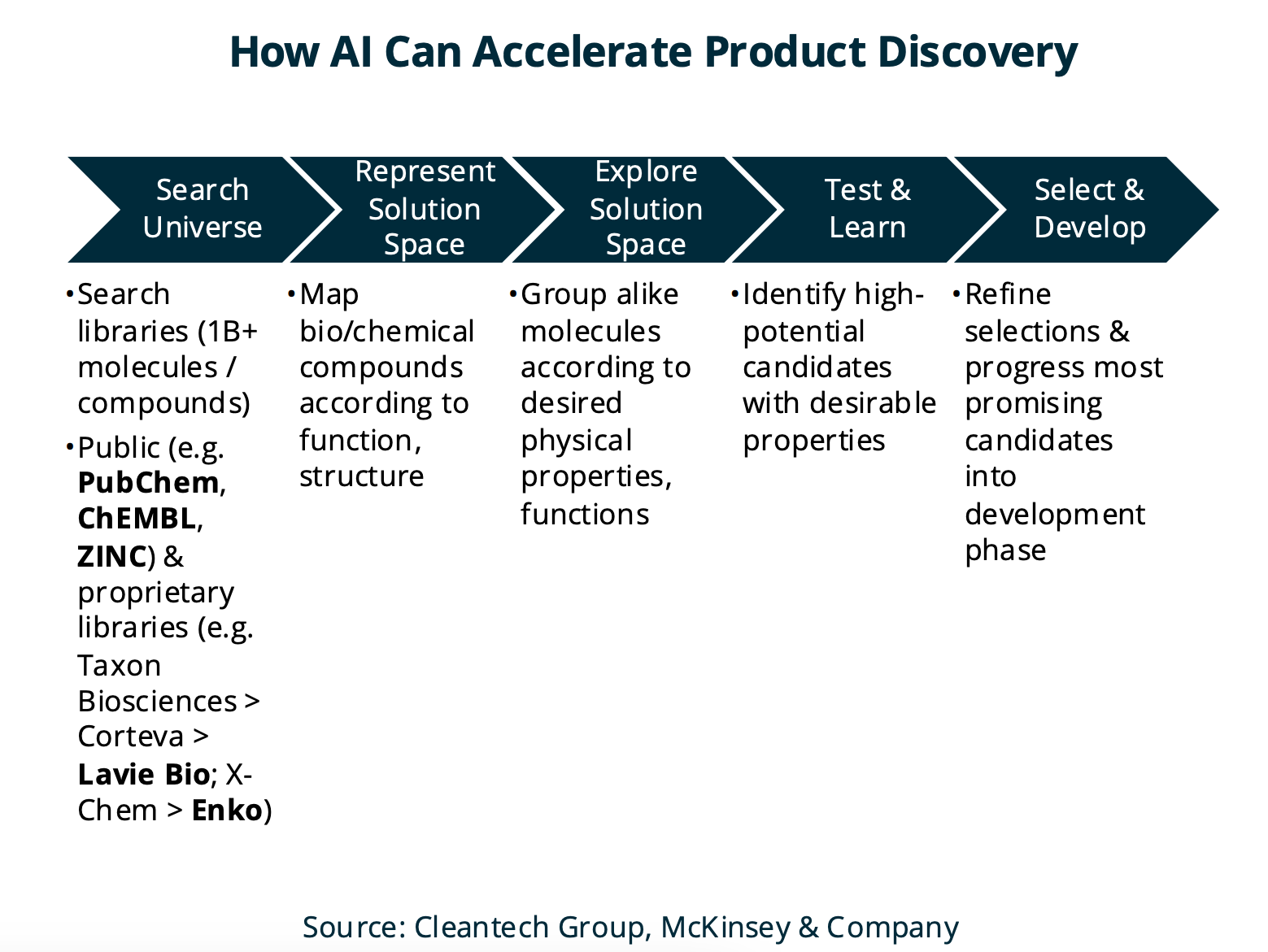Demand for food is surging, with projections indicating that crop production must nearly double by 2050 to sustain the global population.
Chemical crop inputs such as pesticides, fertilizers, and biostimulants drive efficiency in crop production by improving plant nutrition and providing protection against pests and diseases.
These inputs have historically advanced agricultural productivity. But pests such as weeds, molds, and insects can develop resistance to them over time; and increased application of agrochemicals, intended to address this growing resistance, can have negative effects such as environmental harms and higher costs for farmers.
One answer is to create new crop inputs. But that has historically been expensive and time-consuming, requiring years of R&D, field trials, and regulatory filings costing hundreds of millions of dollars.
Artificial intelligence (AI) is transforming this paradigm, enabling smaller-scale innovators and large incumbents alike to accelerate the discovery and development process and slash costs.
Crop Inputs at a Crossroads
Several challenges have converged in the past few decades to bring the longer-term effectiveness of currently available crop input products into question:
- Pests and pathogens are evolving resistance to existing agrochemical solutions, diminishing their effectiveness and requiring increased application rates.
_ - Environmental concerns. To combat resistance, farmers have trended towards applying greater quantities of agrochemical products. This increases the likelihood that harmful amounts of these toxic chemicals run off into surrounding ecosystems, causing environmental degradation.
_ - Supply chain constraints and geopolitical fragility. Particularly when it comes to fertilizers, conventional production is limited by local resource availability and geopolitical tensions, leading to volatility in supply and pricing.
_ - Lengthy and costly R&D process. The clearest route to overcoming resistance while alleviating environmental and geopolitical concerns is to innovate new crop input products. But the discovery of new active ingredients and modes of action (MoAs) can take over a decade and cost hundreds of millions of dollars. Virtually no new herbicidal MoAs have been discovered in the last 40 years, compounding the mounting resistance problem and leaving growers ill-equipped to deal with emergent pests.
AI: The Game-Changer in Crop Input Innovation
Innovators are increasingly turning to AI to bring down the cost and timescale of crop input R&D.
AI can rapidly search and analyze molecular and genomic libraries, scientific publications, and patent records to identify candidate MoAs and active ingredients:
- Identifying new MoAs. AI can uncover innovative mechanisms in which active ingredients interact with target organisms, enhancing their effectiveness and reducing resistance buildup. AI can detect unique biological traits in target pests, determining how these traits can be exploited without harming beneficial organisms or the surrounding environment.
_ - Identifying new active ingredients. Once an MoA is selected, AI can assist in finding the right molecules, microbes, proteins, or enzymes that can trigger the desired effect.
_ - Optimizing product development. After candidates have been identified and have gone through an initial screening, AI-powered modelling can help predict how they will perform in the field, optimizing their efficacy and reducing overall development timeframes, while also automating parts of the regulatory process.
AI essentially reduces reliance on traditional trial-and-error experimentation, allowing for faster pathways to regulatory approvals and more efficient commercialization.

How the Industry is Embracing AI
Recognizing AI’s potential to transform the sector, incumbents in the agrochemical industry are increasing their investments in AI-driven crop input innovation, and forming partnerships with start-ups that have the relevant technological capabilities:
- Enko is using its high-throughput discovery platform to develop new fungicides and herbicides, and has partnered with the likes of Nufarm and Syngenta to explore commercialization possibilities.
_ - Lavie Bio is focused on AI-enabled screening of microbes for use as biopesticides and biostimulants. It has partnered with Syngenta and Bayer and counts Corteva and ICL among its investors.
_ - Moa Technology is using AI and machine learning to discover MoAs for new and existing herbicide agents. It has partnered with Nufarm to begin commercialization of one of its new MoAs.
AI-driven innovation is happening internally at incumbents, too. Bayer, for example, claims to have three times as many MoAs in development at present compared to 10 years ago, thanks in large part to its new CropKey AI discovery platform.
AI’s Here To Stay When it Comes to Crop Inputs
As AI continues to drive advancements in crop input discovery and development, the industry is on the brink of a transformative shift. AI has the power to unlock more sustainable, efficient, and effective inputs that will contribute towards global food security and environmental sustainability.


